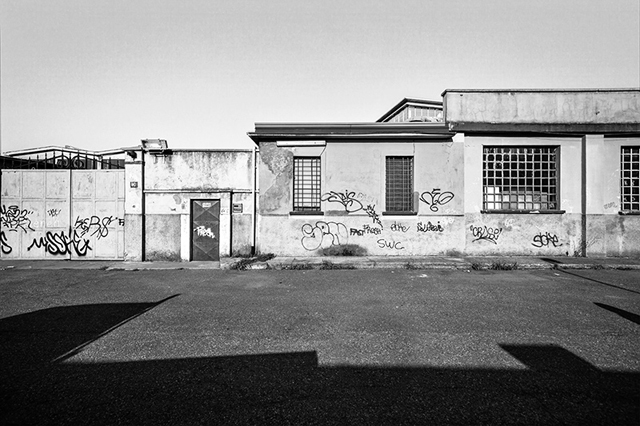
C’è una Milano diversa, che ormai la gente non si aspetta, una Milano fermata nel tempo, che a differenza di altre zone manifatturiere, come Bicocca e Portello ad esempio, non ha nemmeno iniziato la necessaria mutazione verso il terziario. Tra via Rubattino e via Oslavia numerosi sono i resti di fabbriche che nella seconda metà dello scorso secolo hanno dato un significativo contributo all’economia nazionale. Dall’Innocenti alla Faema così come molte altre. In assenza di una riqualificazione, rimangono queste testimonianze degradate, questi scheletri abbandonati, le cui forme riposano grigie, dotate di un’imprevista anonima grazia. Vagando per queste strade a volte si ha la sensazione di sentire il rumore tipico dello scarico di una Lambretta o di vedere sfrecciare le forme compatte di una Mini.
There is a different Milan, which by now people do not expect, a Milan stopped in time, which unlike other manufacturing areas, such as Bicocca and Portello for example, has not even begun the necessary transformation towards the tertiary sector. Between Rubattino Road and Oslavia Street there are numerous remains of factories which in the second half of the last century made a significant contribution to the national economy. From Innocenti to Faema as well as many others. In the absence of a redevelopment, these degraded testimonies remain, these abandoned skeletons, whose forms rest gray, endowed with an unexpected anonymous grace. Wandering through these streets, you sometimes have the sensation of hearing the typical noise of a Lambretta exhaust or of seeing the compact shapes of a Mini whiz by.






